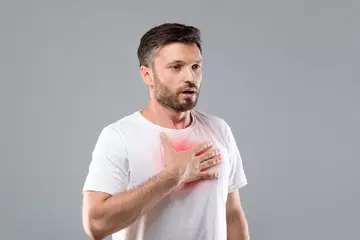What is Aase syndrome?
Aase syndrome is one of the rare disorders in which the individual suffers from a spectrum of diseases, such as anaemia as well as certain deformities of the joints and skeletal framework. It is also known as Aase–Smith syndrome and hypoplastic anaemia - triphalangeal thumb syndrome.
What are the main signs and symptoms of Aase syndrome?
The symptoms of Aase syndrome are as follows:
- The absence of or a reduction in skin creases at the finger joints.
- Delayed growth in the child.
- Narrow shoulders.
- Pale skin.
- Ear deformities.
- Small knuckles.
- Inability to extend the joints to their fullest.
- Triple-jointed thumbs (presence of three bones in the thumb).
In addition to these symptoms, the individual suffers from hypoplastic anaemia, which refers to a significantly low red blood cell count due to certain abnormalities of the bone marrow since birth.
These symptoms are generally seen from the time of birth and become more prominent later on.
What are the main causes of Aase syndrome?
The primary cause of Aase syndrome is not yet known. As this syndrome presents with symptoms since the time of birth, most would suspect it to be an inherited condition. However, many cases of Aase syndrome do not show inheritance. The condition is known to have been inherited in about 45% of the cases.
Both men and women are equally predisposed to Aase syndrome. While a majority of reported cases of Aase syndrome do not have a genetic basis, a positive family history certainly increases the risk.
Anaemia in Aase syndrome is caused due to poor development of bone marrow, which in turn leads to a lower count of red blood cells.
How is Aase syndrome diagnosed and treated?
The primary diagnosis of Aase syndrome is based on physical examination and obtaining the family history.
There are secondary diagnostic tests, which help greatly in confirming Aase syndrome. These include:
- X-rays that help in identifying any bone deformities.
- Complete blood count, which helps in detecting reduced red blood cells (anaemia).
- An echocardiogram that is used to diagnose the presence of any heart defect, the most common in Aase syndrome being a ventricular septal defect.
- Bone marrow biopsy test that helps in diagnosing abnormalities in bone marrow development.
Blood transfusions may be used for treating anaemia in the first year of life to ensure survival in the most vulnerable stage. Steroids are also used for treating anaemia in Aase syndrome. In case these treatments do not show significant improvement, a bone marrow transplant may be considered.
















